I've been working on this problem for awhile and couldn't come up with the solution; I hope you can help out..
I'm trying to find the longest increasing sequence of numbers. For example, if I have the following 4X4 array:
[![enter image description here][1]][1]
int [] nums = {
{97 , 47 , 56 , 36},
{35 , 57 , 41 , 13},
{89 , 36 , 98 , 75},
{25 , 45 , 26 , 17}
};
THE EXPECTED RESULT : return 8 and the LIS 17, 26, 36, 41, 47, 56, 57, 97 I don't have the answer to it yet, I'm trying to reach it.
17 (3,3)
26 (3,2)
36 (2,1)
41 (1,2)
47 (0,1)
56 (0,2)
57 (1,1)
97 (0,0)
I hope my example is clear enough..
This is my code; when I try to find the longest increasing path, it doesn't do it backward not diagonally. Can anyone help me please?
public class Solution2 {
static int[] dx = { 1, -1, 0, 0 };
static int[] dy = { 0, 0, 1, -1 };
public static int longestIncreasingPath(int[][] matrix) {
if (matrix.length == 0)
return 0;
int m = matrix.length, n = matrix[0].length;
int[][] dis = new int[m][n];
int ans = 0;
for (int i = 0; i < m; i++) {
for (int j = 0; j < n; j++) {
ans = Math.max(ans, dfs(i, j, m, n, matrix, dis));
}
}
return ans;
}
static int dfs(int x, int y, int m, int n, int[][] matrix, int[][] dis) {
if (dis[x][y] != 0)
return dis[x][y];
for (int i = 0; i < 4; i++) {
int nx = x + dx[i];
int ny = y + dy[i];
if (nx >= 0 && ny >= 0 && nx < m && ny < n && matrix[nx][ny] > matrix[x][y]) {
dis[x][y] = Math.max(dis[x][y], dfs(nx, ny, m, n, matrix, dis));
}
}
return ++dis[x][y];
}
public static void main(String[] args) {
int arr[][] = {
{ 97, 47, 56, 36 },
{ 35, 57, 41, 13 },
{ 89, 36, 98, 75 },
{ 25, 45, 26, 17 }
};
System.out.println(longestIncreasingPath(arr));
}
}
